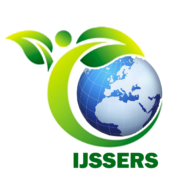The Influence of Organizational Support, Professional Responsibility, and Job Satisfaction toward Teachers’ Performance at TK RA ‘Aisyiyah in Academic Year 2022/2023 in Jetis Sub-district of Ponorogo Regency
The purpose of this study is to find the influence of organizational support, professional responsibility, and job satisfaction toward teachers’ performance at TK RA ‘Aisyiyah in the academic year 2022/2023 in Jetis Sub-district of Ponorogo Regency. This study used a quantitative approach and was tested by regression analysis. Three independent variables included organizational support, professional responsibility, and job satisfaction. There was also a dependent variable, teachers’ performance. This study used a saturation sampling technique with 60 teachers in TK RA ‘Aisyiyah in Jetis Sub-district of Ponorogo Regency as the samples. The data toward those four variables were collected by questionnaire as the instrument. From the analyzed data, the researchers can conclude that: (1) there are positive and significant influences between the organizational support toward the teachers’ performance of TK RA ‘Aisyiyah in Jetis Sub-district of Ponorogo Regency in the amount of 8,4%, (2) there are positive and significant influences between the professional responsibility toward the teachers’ performance of TK RA ‘Aisyiyah in Jetis Sub-district of Ponorogo Regency in the amount of 32,1%, (3) there are positive and significant influences between the job satisfaction toward the teachers’ performance of TK RA ‘Aisyiyah in Jetis Sub-district of Ponorogo Regency in the amount of 11,9%, and (4) there are positive and simultaneously significant influences between organizational support, professional responsibility, and job satisfaction toward the teachers’ performance of TK RA ‘Aisyiyah in Jetis Sub-district of Ponorogo Regency in the amount of 32,5%.

